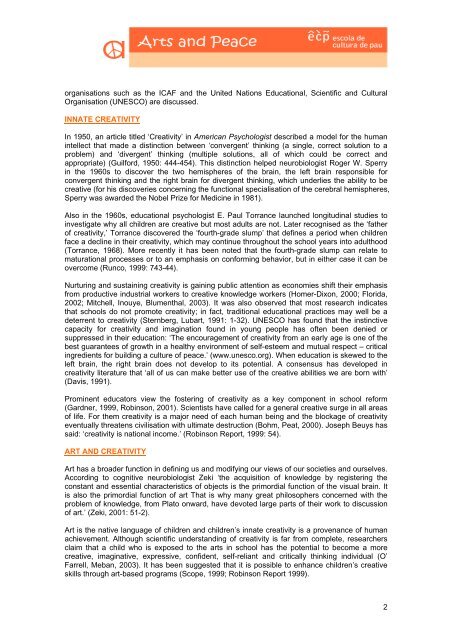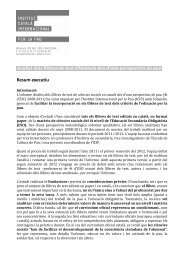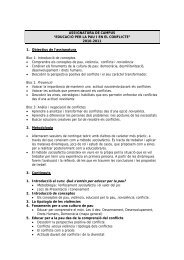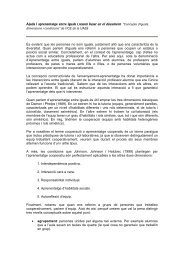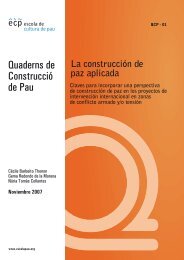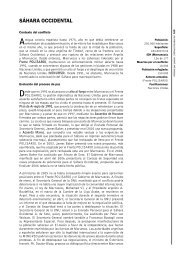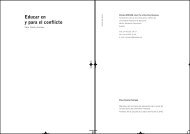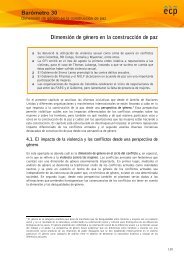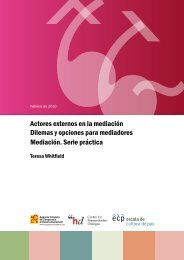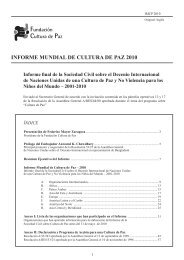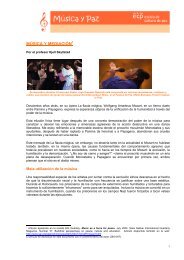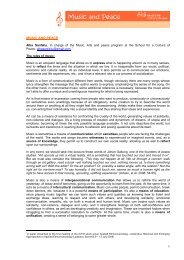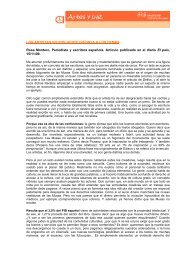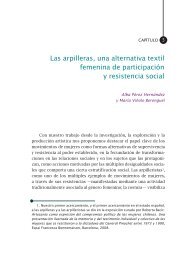PROSPERITY AND PEACE THROUGH ART
PROSPERITY AND PEACE THROUGH ART
PROSPERITY AND PEACE THROUGH ART
Create successful ePaper yourself
Turn your PDF publications into a flip-book with our unique Google optimized e-Paper software.
organisations such as the ICAF and the United Nations Educational, Scientific and Cultural<br />
Organisation (UNESCO) are discussed.<br />
INNATE CREATIVITY<br />
In 1950, an article titled ‘Creativity’ in American Psychologist described a model for the human<br />
intellect that made a distinction between ‘convergent’ thinking (a single, correct solution to a<br />
problem) and ‘divergent’ thinking (multiple solutions, all of which could be correct and<br />
appropriate) (Guilford, 1950: 444-454). This distinction helped neurobiologist Roger W. Sperry<br />
in the 1960s to discover the two hemispheres of the brain, the left brain responsible for<br />
convergent thinking and the right brain for divergent thinking, which underlies the ability to be<br />
creative (for his discoveries concerning the functional specialisation of the cerebral hemispheres,<br />
Sperry was awarded the Nobel Prize for Medicine in 1981).<br />
Also in the 1960s, educational psychologist E. Paul Torrance launched longitudinal studies to<br />
investigate why all children are creative but most adults are not. Later recognised as the ‘father<br />
of creativity,’ Torrance discovered the ‘fourth-grade slump’ that defines a period when children<br />
face a decline in their creativity, which may continue throughout the school years into adulthood<br />
(Torrance, 1968). More recently it has been noted that the fourth-grade slump can relate to<br />
maturational processes or to an emphasis on conforming behavior, but in either case it can be<br />
overcome (Runco, 1999: 743-44).<br />
Nurturing and sustaining creativity is gaining public attention as economies shift their emphasis<br />
from productive industrial workers to creative knowledge workers (Homer-Dixon, 2000; Florida,<br />
2002; Mitchell, Inouye, Blumenthal, 2003). It was also observed that most research indicates<br />
that schools do not promote creativity; in fact, traditional educational practices may well be a<br />
deterrent to creativity (Sternberg, Lubart, 1991: 1-32). UNESCO has found that the instinctive<br />
capacity for creativity and imagination found in young people has often been denied or<br />
suppressed in their education: ‘The encouragement of creativity from an early age is one of the<br />
best guarantees of growth in a healthy environment of self-esteem and mutual respect – critical<br />
ingredients for building a culture of peace.’ (www.unesco.org). When education is skewed to the<br />
left brain, the right brain does not develop to its potential. A consensus has developed in<br />
creativity literature that ‘all of us can make better use of the creative abilities we are born with’<br />
(Davis, 1991).<br />
Prominent educators view the fostering of creativity as a key component in school reform<br />
(Gardner, 1999, Robinson, 2001). Scientists have called for a general creative surge in all areas<br />
of life. For them creativity is a major need of each human being and the blockage of creativity<br />
eventually threatens civilisation with ultimate destruction (Bohm, Peat, 2000). Joseph Beuys has<br />
said: ‘creativity is national income.’ (Robinson Report, 1999: 54).<br />
<strong>ART</strong> <strong>AND</strong> CREATIVITY<br />
Art has a broader function in defining us and modifying our views of our societies and ourselves.<br />
According to cognitive neurobiologist Zeki ‘the acquisition of knowledge by registering the<br />
constant and essential characteristics of objects is the primordial function of the visual brain. It<br />
is also the primordial function of art That is why many great philosophers concerned with the<br />
problem of knowledge, from Plato onward, have devoted large parts of their work to discussion<br />
of art.’ (Zeki, 2001: 51-2).<br />
Art is the native language of children and children’s innate creativity is a provenance of human<br />
achievement. Although scientific understanding of creativity is far from complete, researchers<br />
claim that a child who is exposed to the arts in school has the potential to become a more<br />
creative, imaginative, expressive, confident, self-reliant and critically thinking individual (O’<br />
Farrell, Meban, 2003). It has been suggested that it is possible to enhance children’s creative<br />
skills through art-based programs (Scope, 1999; Robinson Report 1999).<br />
2


